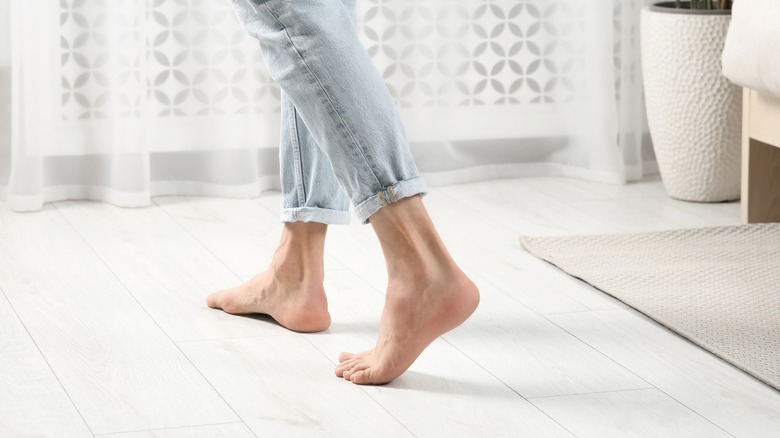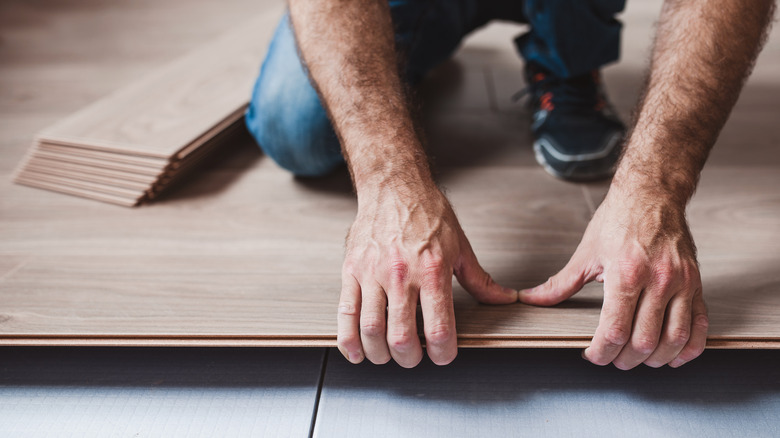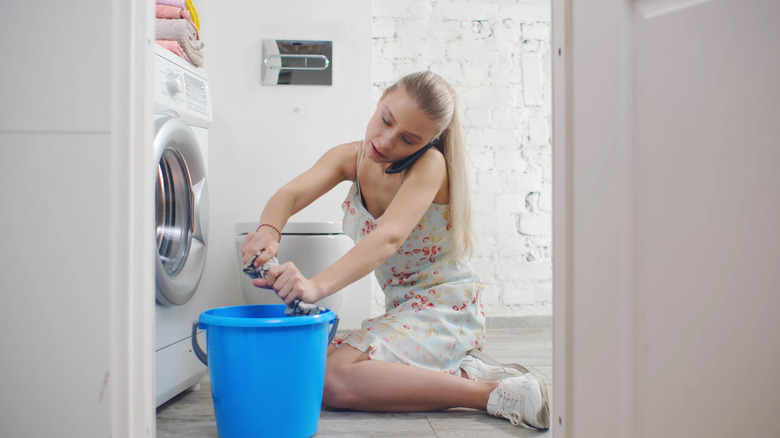The Best And Worst Places In Your Home To Install A Floating Floor
If winter weather is keeping you inside, you may be spending a lot more time looking at your home and what needs to be improved. With excess snow, rain, and mud being tracked into your home, your focus may especially be on your flooring. Do you think it might be time for an upgrade? House Digest spoke exclusively with Skylar Bartlett, owner of Kreer Construction, to learn about the best and worst places to install floating floors in your home.
According to Bartlett, floating floors are constructed with planks that aren't glued or nailed to the subfloor. "Instead, the pieces interlock through tongue-and-groove systems, allowing the entire floor to "float" above the surface," Bartlett said. "This method relies on the flooring's weight and friction to keep it stable, with a small gap around the edges to allow for natural expansion and contraction."
Floating flooring can be great in living rooms, bedrooms, home offices, and basements. They are easily installed on many existing base floorings, including concrete, tile, or hardwood, making them a versatile choice. However, Bartlett recommends that you avoid adding floating flooring to your bathrooms, kitchen, and laundry room. When it comes to their downsides, they can be damaged by moisture, feel less stable, and have a limited lifespan. "While durable, floating floors typically have a shorter lifespan than fully adhered options, particularly in high-traffic or moisture-prone areas," Bartlett explained.
The best places for floating floors in your home
While there are many things to consider before installing floating floors, choosing the best place in your home to install them is vital. When House Digest spoke exclusively with Skylar Bartlett, she explained why living rooms, bedrooms, home offices, and basements could be some of the best places to use this type of flooring.
Bartlett shared that your bedrooms and living room are great places to test out installing floating floors yourself. She also said that "these areas are generally low-moisture environments with minimal risk of water damage, making them ideal for floating floors." In this vein, be sure to consider floating floors for home offices because they can add a layer of insulation for sound. This is great for a quiet workspace but could also make it an ideal choice for a nursery.
Rather than fighting with minor discrepancies in your subfloor, this flooring type may also be perfect for your basement, where floating floors can usually prevent hassle. However, in order to make this work well in your basement, you will need to take a few extra precautions because of the increased moisture in that particular area of your home. "Many floating floor options, like LVP, are designed to handle basement conditions, particularly when paired with a vapor barrier to protect against moisture," Bartlett shared. Taking a few extra moments to ensure you purchase the flooring that's right for your space can help save you a lot of trouble in the future.
The worst places for floating floors in your home
Tongue-and-groove floor systems can be a good option for homeowners on a tight budget. Many floating floor options can be budget-friendly compared to others, especially when it comes to the cost of having someone else install the flooring for you. However, a few places are less than ideal for installing this type of flooring. During an exclusive interview with Skylar Bartlett, she shared with House Digest some of the worst places to install a floating floor in your home so that you can avoid making a major mistake.
According to Bartlett, you want to avoid installing these floors in places where they can be exposed to water and moisture. This includes places like your bathroom, kitchen, and laundry room. "High moisture levels and the risk of standing water can cause damage to the seams or lead to swelling in materials like laminate or engineered wood, reducing the floor's lifespan," Bartlett explained. Water spills can also lead the boards to warp if water gets into the underlayment. Also, you want to avoid using these floors in spaces that may hold heavy equipment and appliances that move around during use. For instance, a washing or drying machine sits on top of the flooring and shakes during each cycle. "Floating floors can shift under the weight of appliances, leading to uneven wear and possible damage," Bartlett shared. While floating floors could be a perfect choice for your home, knowing where to use them and how to avoid mistakes when installing them can help set your expectations before you buy.


